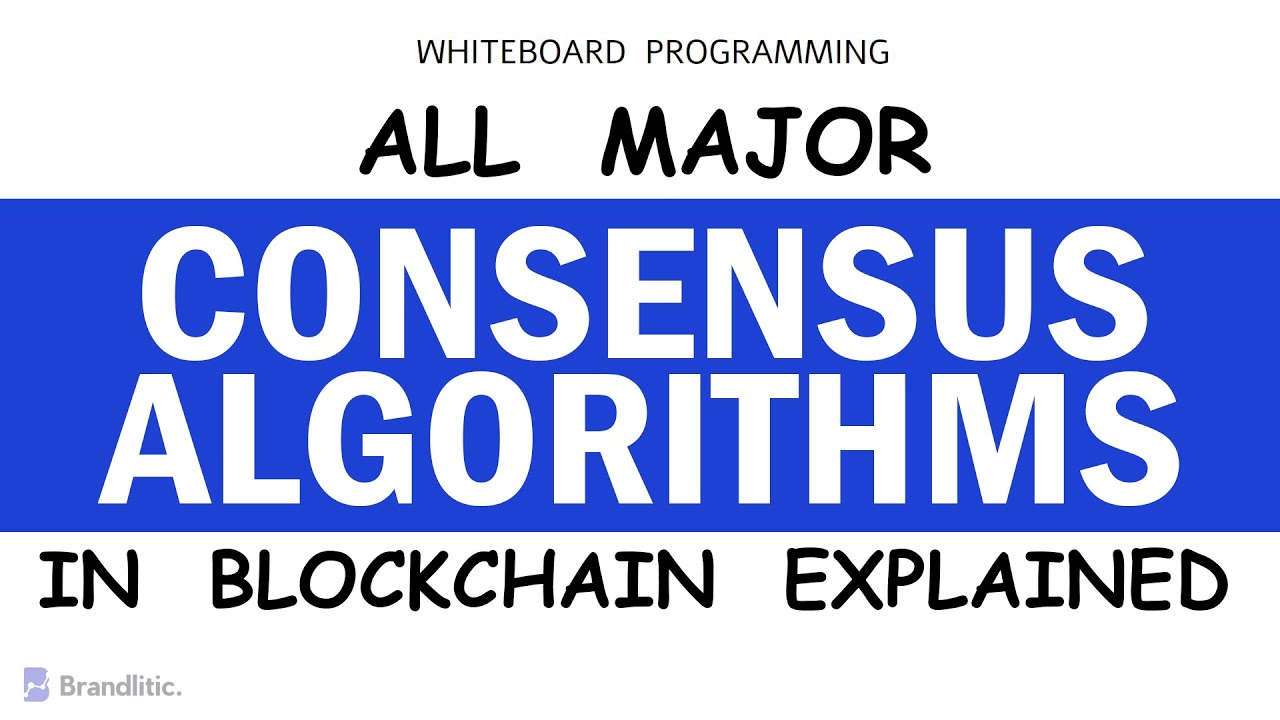Proof of Work in Blockchain Explained | What Is Proof of Work? | Blockchain Tutorial | Simplilearn
Summary
TLDRThis video by Simply Learn covers the key concepts of Proof of Work (PoW) in blockchain. It begins with an introduction to blockchain technology, explaining how it operates as a decentralized database. The video then dives into PoW, describing it as a consensus mechanism that requires participants (miners) to solve cryptographic puzzles to validate transactions and secure the network. It highlights PoW's role in security, the mining process, and potential issues such as energy consumption, 51% attacks, and scalability challenges. Prominent blockchains using PoW like Bitcoin and Ethereum are also discussed.
Takeaways
- 🖥️ Blockchain is a decentralized database made up of sequential blocks that contain recorded data.
- 🔐 Proof of Work (PoW) is a decentralized consensus mechanism that requires network participants to solve mathematical puzzles to validate transactions and prevent system hacking.
- 💻 PoW is primarily used in cryptocurrency mining for securely processing peer-to-peer transactions without a trusted third party.
- ⏳ Miners use computational resources to solve cryptographic issues and locate a valid block, with difficulty levels adjusted to maintain a 10-minute block time.
- 🔀 In case of multiple valid blocks, miners work on both until a new block extends one chain, making it the canonical chain, while the other is discarded.
- 🛡️ PoW blockchains are resilient to Sybil attacks, where users create multiple identities to gain an advantage, and 51% attacks, where one entity controls over 51% of the network.
- 🔑 PoW ensures security and prevents issues like double spending by making any tampering with blocks computationally impractical.
- 💸 Miners earn transaction fees and block rewards when they successfully solve PoW puzzles and validate blocks.
- 🌍 PoW has some challenges, including high energy consumption, susceptibility to 51% attacks, and scalability issues due to the need for every node to process every transaction.
- 🚀 Prominent blockchains using PoW include Bitcoin, Ethereum (transitioning to Proof of Stake), Bitcoin Cash, Litecoin, and Monero.
Q & A
What is a blockchain?
-A blockchain is a decentralized database made up of sequential blocks that contain recorded data. It is backed by a network of self-contained participants, known as nodes.
What is proof of work (PoW) in blockchain?
-Proof of work is a decentralized consensus method that requires network participants to solve complex mathematical puzzles to validate transactions and mine new tokens. It prevents hacking and is commonly used in cryptocurrency mining.
Why is proof of work needed?
-Proof of work is needed for security, preventing fraud, and ensuring trust within a blockchain. It prevents users from double-spending coins or printing coins they haven't earned.
How does proof of work operate?
-Participants, called miners, use computational power to solve cryptographic problems. The miner that finds the correct solution adds a new block to the blockchain, and they are rewarded with transaction fees and block rewards.
What is a hash in the context of proof of work?
-A hash is the result of a hash function, which converts data of any size into a fixed-size number. Miners must find a valid hash that meets the network's protocol requirements to add a block to the blockchain.
What are some advantages of proof of work?
-Proof of work provides high security by being resistant to Sybil attacks, where a user creates many false identities. It also ensures the integrity of transactions, preventing tampering through its chain-link structure.
What is a 51% attack, and how can it affect a proof of work blockchain?
-A 51% attack occurs when a user gains control of over 51% of the network's computational resources, giving them the ability to manipulate the blockchain by adding fraudulent blocks.
What are some major issues with proof of work?
-Key issues with proof of work include its high energy consumption, vulnerability to 51% attacks, lack of scalability, and the enormous cost of maintaining mining operations.
What are some popular blockchains using proof of work?
-Bitcoin is the largest and first blockchain to use proof of work. Ethereum used proof of work but is transitioning to proof of stake. Bitcoin Cash, Litecoin, and Monero are other notable blockchains that use proof of work.
How does proof of work ensure tamper resistance in blockchain?
-Proof of work ensures tamper resistance by linking each block's hash to the next block. Altering one block would change its hash, making it computationally infeasible to alter all subsequent blocks.
Outlines

Этот раздел доступен только подписчикам платных тарифов. Пожалуйста, перейдите на платный тариф для доступа.
Перейти на платный тарифMindmap

Этот раздел доступен только подписчикам платных тарифов. Пожалуйста, перейдите на платный тариф для доступа.
Перейти на платный тарифKeywords

Этот раздел доступен только подписчикам платных тарифов. Пожалуйста, перейдите на платный тариф для доступа.
Перейти на платный тарифHighlights

Этот раздел доступен только подписчикам платных тарифов. Пожалуйста, перейдите на платный тариф для доступа.
Перейти на платный тарифTranscripts

Этот раздел доступен только подписчикам платных тарифов. Пожалуйста, перейдите на платный тариф для доступа.
Перейти на платный тарифПосмотреть больше похожих видео

Perbedaan Konsep Konsensus "Paling Gampang" di Crypto - Proof of Work & Proof of Stake

What is Proof of Work? (Cryptocurrency Explanation)

What is Proof of Stake - Explained in Detail (Animation)

Proof of Work in Blockchain

Pengenalan Blockchain Technology di Balik Cryptocurrency

All Major Blockchain Consensus Algorithms Explained | Consensus Mechanism in Blockchain
5.0 / 5 (0 votes)
